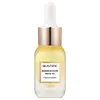What's inside
What's inside
 Key Ingredients
Key Ingredients

 Benefits
Benefits

 Concerns
Concerns

 Ingredients Side-by-side
Ingredients Side-by-side

Coco-Caprylate/Caprate
EmollientHelianthus Annuus Seed Oil
EmollientTriethylhexanoin
MaskingTocopheryl Acetate
AntioxidantSqualane
EmollientDicaprylyl Carbonate
EmollientGlyceryl Caprylate
EmollientSimmondsia Chinensis Seed Oil
EmollientCaprylyl Glycol
EmollientElaeis Guineensis Oil
EmollientPersea Gratissima Oil
Skin ConditioningVitis Vinifera Seed Oil
EmollientCeramide EOP
Skin ConditioningCeramide Ns
Skin ConditioningCeramide Ng
Skin ConditioningCeramide As
Skin ConditioningCeramide AP
Skin ConditioningCeramide NP
Skin ConditioningLimnanthes Alba Seed Oil
Skin ConditioningCamellia Japonica Seed Oil
EmollientSclerocarya Birrea Seed Oil
HumectantMacadamia Integrifolia Seed Oil
Skin ConditioningRosa Canina Fruit Oil
EmollientPlukenetia Volubilis Seed Oil
EmollientTocopherol
AntioxidantButyrospermum Parkii Butter
Skin ConditioningHydrogenated Lecithin
EmulsifyingDipropylene Glycol
HumectantSucrose Distearate
EmollientCholesterol
EmollientCoco-Caprylate/Caprate, Helianthus Annuus Seed Oil, Triethylhexanoin, Tocopheryl Acetate, Squalane, Dicaprylyl Carbonate, Glyceryl Caprylate, Simmondsia Chinensis Seed Oil, Caprylyl Glycol, Elaeis Guineensis Oil, Persea Gratissima Oil, Vitis Vinifera Seed Oil, Ceramide EOP, Ceramide Ns, Ceramide Ng, Ceramide As, Ceramide AP, Ceramide NP, Limnanthes Alba Seed Oil, Camellia Japonica Seed Oil, Sclerocarya Birrea Seed Oil, Macadamia Integrifolia Seed Oil, Rosa Canina Fruit Oil, Plukenetia Volubilis Seed Oil, Tocopherol, Butyrospermum Parkii Butter, Hydrogenated Lecithin, Dipropylene Glycol, Sucrose Distearate, Cholesterol
Paraffinum Liquidum
EmollientTriisononanoin
Skin ConditioningCetearyl Ethylhexanoate
EmollientIsopropyl Myristate
EmollientRetinyl Palmitate
Skin ConditioningHelianthus Annuus Seed Oil
EmollientTocopheryl Acetate
AntioxidantAnthemis Nobilis Flower Oil
MaskingLavandula Angustifolia Oil
MaskingRosmarinus Officinalis Leaf Oil
MaskingCalendula Officinalis Extract
Skin ConditioningGlycine Soja Oil
EmollientBisabolol
MaskingTocopherol
AntioxidantParfum
MaskingAlpha-Isomethyl Ionone
PerfumingAmyl Cinnamal
PerfumingBenzyl Salicylate
PerfumingCitronellol
PerfumingCoumarin
PerfumingEugenol
PerfumingFarnesol
PerfumingGeraniol
PerfumingHydroxycitronellal
PerfumingLimonene
PerfumingLinalool
PerfumingCI 26100
Cosmetic ColorantParaffinum Liquidum, Triisononanoin, Cetearyl Ethylhexanoate, Isopropyl Myristate, Retinyl Palmitate, Helianthus Annuus Seed Oil, Tocopheryl Acetate, Anthemis Nobilis Flower Oil, Lavandula Angustifolia Oil, Rosmarinus Officinalis Leaf Oil, Calendula Officinalis Extract, Glycine Soja Oil, Bisabolol, Tocopherol, Parfum, Alpha-Isomethyl Ionone, Amyl Cinnamal, Benzyl Salicylate, Citronellol, Coumarin, Eugenol, Farnesol, Geraniol, Hydroxycitronellal, Limonene, Linalool, CI 26100
 Reviews
Reviews

Ingredients Explained
These ingredients are found in both products.
Ingredients higher up in an ingredient list are typically present in a larger amount.
Helianthus Annuus Seed Oil is the oil derived from the seeds of a Sunflower. Sunflower seed oil is non-fragrant. It is an emollient, meaning it helps to soften the skin.
Sunflower seed oil contains many fatty acids. The fatty acids found in sunflower seeds include (from highest amount to least): linoleic acid, myristic acid, palmitic acid, stearic acid, arachidic acid, oleic acid, and linolenic acid.
These fatty acids help the skin create ceramides. Ceramides play a role in repairing the skin barrier.
Helianthus Annuus Seed Oil helps moisturize the skin. This in turn helps the skin look more rejuvenated and smoother.
Sunflowers are rich in vitamin E.
Historians believe Indigenous cultures of North America domesticated sunflowers before corn. Thus they relied on sunflower oil for a variety of uses. One such use is moisturizing skin and hair.
Sunflower seed oil may not be fungal acne safe. We recommend speaking with a professional if you have any concerns.
Learn more about Helianthus Annuus Seed OilTocopherol (also known as Vitamin E) is a common antioxidant used to help protect the skin from free-radicals and strengthen the skin barrier. It's also fat soluble - this means our skin is great at absorbing it.
Vitamin E also helps keep your natural skin lipids healthy. Your lipid skin barrier naturally consists of lipids, ceramides, and fatty acids. Vitamin E offers extra protection for your skin’s lipid barrier, keeping your skin healthy and nourished.
Another benefit is a bit of UV protection. Vitamin E helps reduce the damage caused by UVB rays. (It should not replace your sunscreen). Combining it with Vitamin C can decrease sunburned cells and hyperpigmentation after UV exposure.
You might have noticed Vitamin E + C often paired together. This is because it is great at stabilizing Vitamin C. Using the two together helps increase the effectiveness of both ingredients.
There are often claims that Vitamin E can reduce/prevent scarring, but these claims haven't been confirmed by scientific research.
Learn more about TocopherolTocopheryl Acetate is AKA Vitamin E. It is an antioxidant and protects your skin from free radicals. Free radicals damage the skin by breaking down collagen.
One study found using Tocopheryl Acetate with Vitamin C decreased the number of sunburned cells.
Tocopheryl Acetate is commonly found in both skincare and dietary supplements.
Learn more about Tocopheryl Acetate